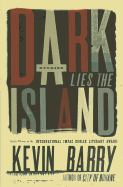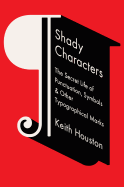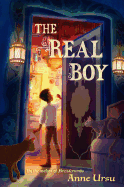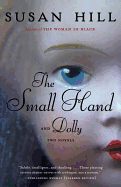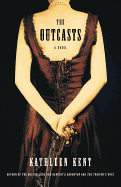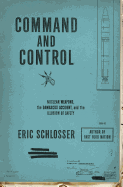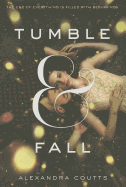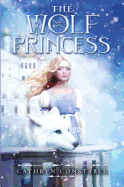Friday, October 4, 2013
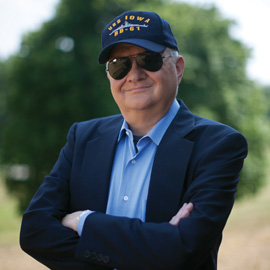 |
|
|
photo: David Burnett |
|
Tom Clancy, who arguably created the genre of military-techno thriller, died Wednesday. He was 66 and was being treated in a Baltimore hospital for an undisclosed illness.
In the early 1980s, Clancy was an insurance agent in rural Maryland; he wrote The Hunt for Red October in his spare time. The manuscript was rejected by major publishers, which led him to approach the Naval Institute Press, in Annapolis, which had never published a novel. The Press took a chance with the book--and it was an immediate hit, helped in part by praise from President Reagan.
Clancy, whose subsequent books were published by Putnam, churned out blockbusters regularly, many featuring CIA analyst Jack Ryan, who first surfaced in Hunt for Red October. Some of his titles also became hit movies, including Hunt for Red October, Patriot Games and Clear and Present Danger. Clancy also set up a videogame company and became a part-owner of the Baltimore Orioles. There are more than 100 million copies of his books in print. Command Authority, another Clancy novel starring Jack Ryan, written with Mark Greanery, will be published December 3.
The Day recalled Clancy's loyalty to the Booksmith, the New London, Conn., bookstore that was the first to host an event by the unknown author. The late owner, Judy Reed, got an advance copy of The Hunt for Red October from a Naval Institute Press rep in 1984. "She and her husband stayed up, reading it that night," the Day wrote. "The next day, she told the publisher they wanted the author in their store--they knew they could sell this submarine-focused techno-thriller in southeastern Connecticut, home of the Naval Submarine Base and Electric Boat."
Clancy was so happy with his first event--at which he sold about 75 copies of his book--that he returned for signings of every new book. At his last signing at the store before it closed in 2000, he signed some 1,500 books. "On one level, I kind of owe it to them, and on another level, I come here for luck," Clancy told the Day.
Dark Lies the Island: Stories
by Kevin Barry
Kevin Barry's first novel, City of Bohane, won the International IMPAC Dublin Literary Award and was widely praised for its anarchic vision of a futuristic Ireland. In Dark Lies the Island, the Irish writer offers 13 bleak but very funny stories that excavate the hapless predicaments of contemporary Irish couples (or, often, men).
A poet, romancing the Irish coast, buys an old inn and finds himself in gothic and sozzled isolation with malevolent locals and catastrophic weather. A middle-aged man tries, with ever-increasing desperation, to convince himself of the enduring perfection of his life while its façade crumbles. Two sinister old ladies search for a child of their own as they travel the countryside. "Beer Trip to Llandudno," a story about a group of middle-aged ale connoisseurs, won the Sunday Times Short Story Award; Hanif Kureishi praised it for being "funny and unexpectedly moving."
Barry's writing is a marvel: it is immoderate, probing, alive and lyrical, a cross between Roddy Doyle and Patrick McCabe. He plumbs his characters' lives and finds the nuances of everyday pathos and humor. "She searched the night for calm," he writes in the title story, a phrase that neatly captures the experience of many of his characters. They may not find calm, but they experience just enough flashes of joy to relieve the darkness. Dark Lies the Island is an exceptional collection by one of the most talented Irish writers of his generation. --Jeanette Zwart, freelance writer and reviewer
Discover: A darkly funny but moving collection of stories by an award-winning Irish writer widely praised for his tragicomic lyricism.
Doctor Sleep
by Stephen King
As a sequel to 1977's The Shining, Doctor Sleep has unspeakably large shoes to fill, but Stephen King is more than able to follow up on the thought-provoking and deliciously shivery thrills of that novel.
Several decades after the events of The Shining, Dan Torrance, haunted by the ghosts of his childhood, is deep in the ugly throes of his father's disease, alcoholism. He lands in the small town of Frazier, N.H., where he finds meaningful work, a few good friends and Alcoholics Anonymous. Finally his life seems to be on track--until a little girl named Abra is born, whose "shine" is astronomically brighter than his ever was. A community of not-quite-humans is zeroing in on Abra; to live, they need what she has, and they balk at nothing, including violence toward children, to get it. Thus, Dan is again embroiled with the monsters he couldn't drink away, but thought he'd learned to store in a lockbox on a dusty shelf in his mind.
King continues to show a mastery that extends beyond genre. Doctor Sleep has The Shining's spooky intimate authenticity, 11/22/63's grasp of pop cultural references and sense of time and place, and Carrie's uncanny understanding of youth. Where The Shining took place in a single claustrophobic setting, Doctor Sleep roams wide both geographically and topically, through paranormal concepts and King's prodigious imagination. Themes of family and personal struggle persist, but perhaps most enjoyable are the page-turning suspense and terror for which King is so deservedly famous. --Julia Jenkins, librarian and blogger at pagesofjulia
Discover: The long-awaited sequel to The Shining lives up to its heritage.
The Small Hand and Dolly
by Susan Hill
Henry James described the inclusion of children in a ghost story as adding another turn of the psychological screw. It's a technique Susan Hill (The Woman in Black) has often used to great effect, most recently in two short novels, The Small Hand and Dolly, published in the U.K. in 2010 and 2012. These gothic ghost stories are aptly paired for their American publication, as they both explore the dark, intensified emotions of childhood.
In The Small Hand, rare book dealer Adam Snow stumbles upon a ruined Edwardian house and abandoned garden, in which he encounters the lonely and persistent spirit of a drowned boy, intent on claiming a victim of its own. Meanwhile, in Dolly, orphaned Edward Cayley is sent along with his malicious and willful cousin Leonora to spend the summer at Iyot House, the gloomy and crumbling home of a childless relative. In a rage, Leonora destroys a china doll; decades later, that mistreatment is mercilessly visited back upon the next generation.
Hill doesn't overextend herself in areas of characterization or plot. Her characters are serviceable and any internal logic driving her stories forward is cloaked in a hazy mist of intensified sensation--which seems to be the point. Ominous settings and disturbing behavior are presented with the keen intensity of a child's imagination: visceral, acute and operating on a level beyond adult reason. Fans of gothic horror will devour these unrestrainedly atmospheric stories... but they might want to leave the light on. --Judie Evans, librarian
Discover: A pair of short horror novels examines the chilling passions that lurk in the heart of childhood trauma.
The Outcasts
by Kathleen Kent
With The Outcasts, Kathleen Kent moves away from the New England setting of her first two novels (The Heretic's Daughter and The Traitor's Wife) in favor of 1870s Texas. As Lucinda Carter plots with her lover to run away from the brothel where she works, pursuing rumors of hidden gold, lawman Nate Cannon joins forces with two Texas Rangers to track down one of the worst serial killers the state has known. At first, the distance between the two stories seems vast, but as Lucinda and Nate move toward their targets, it becomes clear their stories--and their fates--are more intertwined than either could possibly know.
The Outcasts introduces a lot of characters without a lot of background but, for the most part, Kent pulls it off. Nate and his Ranger companions, in particular, are understandable, if not entirely attractive, characters; Nate's sense of justice sometimes clashes with the Rangers' sense of revenge, but the three make an interesting team that highlights the unmonitored and often reckless approach to law enforcement in 19th-century Texas. Lucinda's personality is a bit trickier, wavering between an intelligent girl with an independent streak and a doe-eyed lover who will do anything her man asks of her. Through the combined perspectives of these varied and multi-layered characters, Kent brings to life a world lived on the edge of everything: civilization, lawfulness and morality. --Kerry McHugh, blogger at Entomology of a Bookworm
Discover: Kathleen Kent leaves Puritan New England behind for a story of the American West--complete with bawdy houses, lost treasure and Texas Rangers.
A Man of His Own
by Susan Wilson
In her new novel, A Man of His Own, Susan Wilson (One Good Dog) explores the lives of three people brought together by a stray German Shepherd mixed-breed pup.
As World War II begins, Frederick "Rick" Stanton is an up-and-coming baseball pitcher with the Braves. One night, outside a tavern, he spots the stray pup, names him Pax ("Peace") and brings him home. Man and super-smart dog bond instantly; their pack of two expands to accommodate Rick's new love, Francesca, who later becomes Rick's wife.
When Rick is called up to serve on the front lines, Francesca spots a persuasive ad in search of obedient, well-trained dogs to assist the military defense. When she tells Rick, the Stantons eagerly volunteer Pax for the K-9 Corps.
Pax is deployed and assigned to Pvt. Keller Nicholson, a man with a sad, lonely past who forms a bond with Pax as strong as the one the dog forged with Rick on American soil. Pax ultimately saves Keller's life, and when the two are finally discharged from service, Keller contacts the Stantons, asking to adopt Pax. Rick, however, has returned from war severely wounded, a changed man in body and soul. Is there some way these three people can all share--and love--the same dog?
Wilson has crafted an emotionally complex, sweeping story of war--on the battlefield and in the heart--where lost, wounded souls come together and form a challenging, life-changing alliance. --Kathleen Gerard, blogger at Reading Between the Lines
Discover: A stray dog unites and transforms three lives affected by World War II.
Food & Wine
The Macaroon Bible
by Dan Cohen
Macaroons might be one of the simplest desserts in the world, using beaten egg whites and sweetened condensed milk to turn a lump of shredded coconut into a delicious morsel of sweetness and texture. Dan Cohen discovered this when he started baking macaroons for his family's Passover celebrations--three tons of coconut later, he's a veritable expert and the owner of New York's premier macaroon company. The Macaroon Bible, his first foray into cookbooks, attempts to bring to readers the essence of the macaroon--namely, that they "aren't so much coconut cookies as they are cookies that utilize coconut as the vehicle to deliver happiness to mouths."
Cohen starts out with a brief background on the sugary treat, explaining its relationship to the macaron (the French egg-white confection with which it is often confused) and its roots in Persian culinary history. He then lays out the basics of the naturally gluten-free macaroon, from tools and equipment to techniques to the simple, unaltered recipe. Then the fun begins, as the master macarooner offers up dozens of variations on that basic formula. The Macaroon Bible includes recipes for standard varieties, such as chocolate-dipped macaroons or bourbon macaroons, as well as more unexpected updates, such as carrot cake macaroons and pumpkin spice macaroons. The simplicity of the dessert coupled with Cohen's easy-to-follow instruction make the treats easy to master. With so many varieties, even the most dedicated coconut-haters will enjoy getting to know this otherwise underappreciated delectable. --Kerry McHugh, blogger at Entomology of a Bookworm
Discover: The founder of New York's Danny Macaroons presents a collection of recipes for basic and unexpected variations on the coconut treat.
Dining at the White House: From the President's Table to Yours
by John Moeller
John Moeller loves his work, and Dining at the White House is a meticulously documented, affectionate memoir of his 13 years as a chef at the executive mansion. It's also a work of American history and a cookbook.
Serving three presidents--George H.W. Bush, Bill Clinton and George W. Bush--Moeller didn't just fulfill the daily nutritional needs of the First Families, but responded to each administration's preferences, including a teenage Chelsea Clinton's request for cooking lessons. His stories read like a diary, with countless behind-the-scenes peeks at his experiences serving "at the pleasure of the president," from state dinners for hundreds to the annual Easter Egg roll to serving the White House on September 11, 2001. He's justifiably proud of the day he prepared Sunday brunch for 25 with an hour's notice, and the bold decision to serve sushi and miso soup to the senior Bushes, knowing they'd traveled in Asia. (They loved it.)
Photos include not only First Families and food but official invitations prepared by staff calligraphers, and the china and stemware selected by White House residents throughout history. The cookbook section of more than 100 recipes opens with two menus Moeller created--one for a dinner prepared for Vladimir Putin's visit in 2001, the other for a Christmas celebration three years later--with the dishes scaled down to serve six.
John Moeller's reminiscences of the White House are distinctly apolitical, and he recalls each president and family with respect and affection. --Cheryl Krocker McKeon, bookseller, Book Passage, San Francisco
Discover: A former White House chef's memoir/cookbook includes charming anecdotes from three administrations plus delicious and accessible recipes.
History
One Summer: America, 1927
by Bill Bryson
"History is bunk," said Henry Ford, one of the larger-than-life characters in Bill Bryson's One Summer: America, 1927. But Bryson's comprehensive and consistently entertaining history of that momentous summer certainly debunks the automotive pioneer's dismissive judgment.
Of the several epic figures who anchor One Summer, the most noteworthy is 25-year-old Charles Lindbergh, whose nonstop flight from New York to Paris on May 20-21 catapulted him to fame, inspiring a "moment of sublime, spontaneous, unifying joy on a scale never before seen." Americans in 1927 were also awed by Babe Ruth's epic chase to hit 60 home runs as he led what was probably the greatest baseball team of all time; and they flocked to the first talking movie, The Jazz Singer. The first demonstration of television occurred that year, and 30 million people listened to the Dempsey-Tunney "long count" fight in September.
But all wasn't achievement and celebration. The catastrophic Mississippi River flood devastated an area almost the size of Scotland; 38 children were killed in an elementary school bombing in Michigan; the anarchists Sacco and Vanzetti were executed; and the world's central bankers made a fateful decision on interest rates that, Bryson (I'm a Stranger Here Myself, A Walk in the Woods et al.) asserts, laid the groundwork for the stock market crash two years later. He relates these stories and many more with deft pacing and sufficient dashes of his trademark wit to entertain readers, all the while conveying impressive helpings of historical fact.
It's impossible to come away from this energetic account without a strong sense of the vitality that animated American life in that raucous summer; 1927 must have been a thrilling time to be alive. --Harvey Freedenberg
Discover: Bill Bryson's portrait of the U.S. at the peak of the Roaring Twenties is a model work of popular history.
Current Events & Issues
Command and Control: Nuclear Weapons, the Damascus Accident, and the Illusion of Safety
by Eric Schlosser
The Cold War was a dangerous period in American history, marked by anti-Communist obsession and a massive build-up of nuclear weapons. The men who built the atom bomb for the Manhattan Project never foresaw its use as a weapon of mass destruction, nor did they predict the lengths to which the U.S. military would dictate its use, advocating a deterministic theory of war based on fear rather than facts.
In Command and Control, award-winning journalist Eric Schlosser (Fast Food Nation) details the policies, operations and politics governing the U.S.'s decades-long stockpiling of nuclear weapons. Crucially, he exposes the military's blatant disregard for human infallibility and mechanical failure, a disregard that could lead to nuclear detonations on domestic soil--including the explosion of a Titan II missile in Damascus, Ark., in September 1980, a disaster that could have been avoided had safety precautions been taken seriously.
Command and Control makes a searing indictment against the country's military and political leaders for fueling an international appetite for mass destruction. As Schlosser alternates between the accidental detonation in Damascus and the decades of nuclear policy leading up to that moment, he presents a chilling portrait of how the military's singular focus on total annihilation could have sparked another global war. --Nancy Powell, freelance writer and technical consultant
Discover: Eric Schlosser follows up his exposés of the fast food industry and the war on drugs with a chilling portrait of the U.S. military's Cold War nuclear policy.
Reference & Writing
Shady Characters: The Secret Life of Punctuation, Symbols & Other Typographical Marks
by Keith Houston
Keith Houston's Shady Characters is an entertaining history of things nearly everyone uses daily, but few of us think about. Why, for example, are paragraphs often indented? Why is the @ symbol used in e-mail addresses? Why does # have so many different names (including hashtag, pound sign and octothorpe)? When did quotation marks first appear in written history?
Houston answers these and other questions, devoting a chapter each to the history of various punctuation and typographical marks: such as the pilcrow (¶), the asterisk (*) and the dash (-). He traces their origins from ancient Greek and Latin, through the monks and scholars of the Middle Ages, the standardization of Gutenberg's printing press and the limitation of the typewriter's keyboard size--which affected the characters that would survive into modern usage.
Shady Characters is full of delightful trivia--like the fact that the ampersand (&) started life as Pompeiian graffiti, or that pound is abbreviated lb. because it derives from the Latin expression libra pondo (a pound in weight), or that the name of the interrobang, which combines the question mark and exclamation point in a single symbol, came out of a magazine contest in the 1960s. Full of illustrations ranging from images of ancient manuscripts to typewriter keyboards and contemporary typefaces, Shady Characters is an engaging mix of grammar and typography that fans of etymology, history and graphic design can all enjoy. --Jessica Howard, blogger at Quirky Bookworm
Discover: The history of punctuation and typographical marks from ancient Greece to the modern era!!
Children's & Young Adult
The Real Boy
by Anne Ursu, illus. by Erin McGuire
In the tradition of The Velveteen Rabbit and Pinocchio, Anne Ursu's (Breadcrumbs) latest novel explores what makes someone (or something) "real." The author mines the potential of magic and mystery in the story of 11-year-old Oscar, whom Master Caleb, "the first magician in a generation," plucked from the orphanage.
Oscar lives with Master Caleb in the Barrow, "the tangle of forest and darkness" that encircles Asteri, the "Shining City," named for its "Shining People." Oscar prefers not to talk with anyone, and feels most at home in the forest, where the magic lives in the soil of the wizard trees. There Oscar gathers herbs, then mixes them in the cellar of the magician's shop for Master Caleb's concoctions. Ursu weaves together a haunting tale of a village greedy for magic and power. Rather than confront themselves, the citizens crave more and more magic to do the work for them. And the cost is great.
Ursu describes how Oscar prizes routine and rules--and how compelled he feels to find answers to what's happening to the disintegrating world around them ("[I]t was very difficult to know how to function in the world when every truth turned out to be just an illusion"). As Oscar ventures into the unknown to set things right, he learns he has more courage than he could ever have imagined. --Jennifer M. Brown, children's editor, Shelf Awareness
Discover: Eleven-year-old Oscar, adopted by a magician, learns there are things in life that matter more than magic.
Tumble & Fall
by Alexandra Coutts
This debut novel takes its title from the Ben E. King song that serves as an epigraph: "If the sky that we look upon/ Should tumble and fall/ .../ I won't cry/ .../ Just as long as you stand, stand by me." For three teens, the sky literally is falling, as an asteroid on a collision course with Earth threatens an extinction-level event. However, the story focuses not on the asteroid, but rather on Sienna, Suzanne ("Zan") and Caden. In alternating chapters, readers follow them through their final six days in a small community on Martha's Vineyard.
Coutts frames their epic battle as a race against time. Because they must accomplish what self-actualization they can in six days, this means experiencing as much living, loving and forgiving as possible before the end. " 'It's simple, really,' Zan thinks.... They might not have much time. And no matter what they're going to find out,... they have to do it now or they may never get the chance."
The author's nuanced writing carries emotional power that sneaks up on readers. And the finite time frame contributes to the book's narrative strength. With just six days for the three friends to figure out the big questions in life, Coutts underscores the truth to the discovery Sienna makes: "Today isn't about reliving, or explaining, or trying to make sense of things in the past. Today is about who she is now, and who she has standing beside her." --Jessica Bushore, former public librarian and freelance writer
Discover: Three teens confront the end of the world, deciding whom they want to stand by and where they belong.
The Wolf Princess
by Cathryn Constable
Debut novelist Cathryn Constable fills her tale with color--and the lack thereof: a bland school under grey English skies, the blinding white of the Russian forests, the glittering sparkle of lost diamonds. An orphan, Sophie, is sent to boarding school after her father's death. The loss leaves her longing for a new home: "[I]f home is that place that you never want to leave... and if you leave it, you look for all your life."
Sophie and her friends are on their way to St. Petersburg, Russia, for their school break. But as they wait at a deserted train station, a large Cossack named Ivan arrives, claiming that Princess Volkonskaya is expecting them at the Volonsky Winter Palace. Sophie explores the palace with the Princess, searching for lost diamonds, and feels a haunting familiarity. This is confirmed when she sees the white wolves, historic guardians of the Volonskys, and recalls snippets of stories from her childhood that may have been more than fairy tales.
Constable's shift from journalistic writing may be noticeable to adults, but middle-grade readers will likely be carried along by the non-traditional setting and a sprinkling of Russian words (defined in a glossary in the back), which guarantee a special read. --Jessica Bushore, former public librarian and freelance writer
Discover: A mysterious tale in an enchanting Russian setting as orphan Sophie searches for a home and her destiny.


